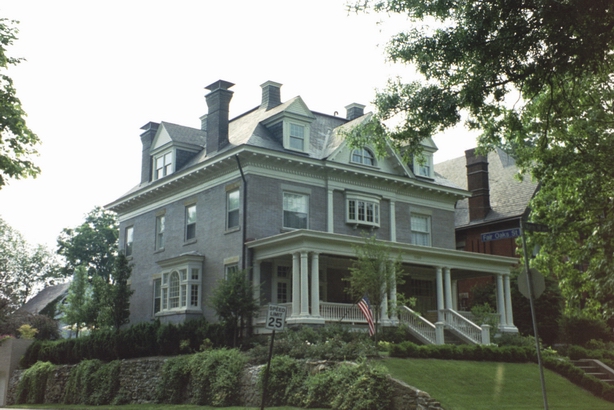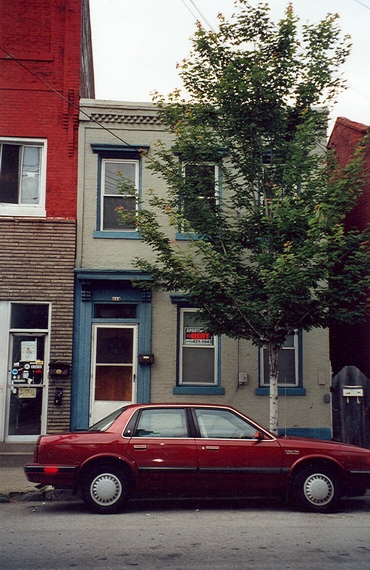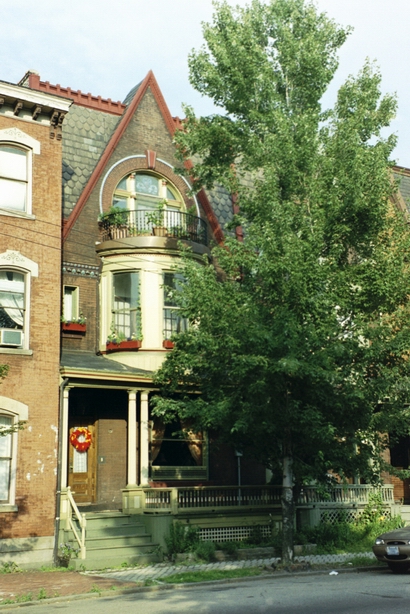|
¡@ Double Birthday Joseph C. Murphy
Text: Uncle Valentine and
Other Stories: Willa Cather¡¦s Uncollected Short Fiction: 1915-1929.
Lincoln, NE: U of Nebraska P, 1973. 41-63. ¡@
Outline I. IntroductionII. The Court House III. Judge Hammersley¡¦s House IV. Albert and Uncle Albert¡¦s House VI. Crossings and Doublings: Significance of Title
¡§Double Birthday" (1929) is in many ways cut from the same fabric as"Neighbour Rosicky" (1928). Characters in both stories face mortality, remember the past, and persist in lives lived against the grain of financial success. But whereas Rosicky prefers the prairie to the city,"Double Birthday" shows characters rooting their lives in a modern industrial city, Pittsburgh. Neither of the two protagonists¡XAlbert Engelhardt and his uncle with the same name (hereafter"Albert" and"Uncle Albert")¡Xhas pursued success as Pittsburgh defines it. Fifty-five-year-old Albert has squandered his family¡¦s fortune, and eighty-year-old Uncle Albert, although once a successful throat doctor, gambled all his hope on the voice of one young singer¡Xand lost. Albert and Uncle Albert find meaning in the city by linking together different houses, neighborhoods, and points in history. The story¡¦s houses are all based on places Cather knew, and the motion between them forms the story¡¦s structure, as follows:
Section Location
¡@
It is significant that the story opens at a courthouse. A courthouse is a seat of judgment, and Cather¡¦s narrator begins by making a judgment about ¡§individuals" who don¡¦t seem to fit in: Even in American cities, which seem so much alike, where people seem all to be living the same lives, striving for the same things, thinking the same thoughts, there are still individuals a little out of tune with the times¡Xthere are still survivals of a past more loosely woven, there are disconcerting beginnings of a future yet unforeseen. (41) The narrator makes a bold claim: people who seem"a little out of tune with the times" are not simply living in the past¡Xthey also reflect"a future yet unforeseen." They see more than the rest of us. As the scene unfolds, Albert appears as the individualist of the future, living according to his personal values, while the judge¡XJudge Hammersley¡Xviews Albert as a failure. Ironically, Cather¡¦s narrator does not share the Judge¡¦s judgment. Although Hammersley is"really a sympathetic man" (42), he is also blind to virtues in Albert that Cather wants us to see.
Judge Hammersley¡¦s HouseJudge Hammersley¡¦s house, located in a wealthy section called Squirrel Hill, reflects his standards of success. He has a comfortable residence, a nice library, and a black servant. He likes order and privacy, and is quite content even when his daughter, a widow named Mrs. Parmenter, is out for the evening. Later Albert will view houses like the judge¡¦s as places of"heavy domestic routine" with"all the frictions and jealousies and discontents of family life" (55). Based on what we see of the Judge¡¦s house, is this a fair characterization of life in Squirrel Hill, or is Albert negatively stereotyping a kind of existence that he will never have?
Albert and Uncle Albert¡¦s HouseBy contrast to the Judge¡¦s house, the house of Albert and Uncle Albert is"a workingman¡¦s house" in"a queer part of the city" on the South Side. It is the only possession remaining of the fortune that Albert and his brothers inherited from their father, the wealthy glass manufacturer August Engelhardt. Despite these reduced circumstances, Albert enjoys his piano and furniture, his books and pictures; these remind him of his youthful freedom and exploration, especially of his years in Rome. He also enjoys caring for his old uncle, and the companionship they share with their downstairs tenants, the Rudders. Mr. Rudder once worked in August Engelhardt¡¦s factory; now Mrs. Rudder and her daughter Elsie look after the bachelors¡¦ rooms and help care for old Uncle Albert.
Old Engelhardt HouseSection 3 of the story, which takes place some thirty years in the past, centers around the old Engelhardt house in Allegheny, on the north side of Pittsburgh. This house with"many colored bricks, with gables and turrets," across from a park, represents an easier kind of existence than either the Judge or the two Alberts enjoy in the present (48). Perhaps this is"the past more loosely woven" that the narrator refers to in the first paragraph. The Engelhardt boys enjoy a leisurely, aesthetic life in their yard. Uncle Albert and young Marjorie Hammersley were both frequent visitors then.
It is at the old Engelhardt house that the singer Marguerite Thiesinger enters into the life of Uncle Albert. He discovers her unique voice, the"one Voice," sounding from the chapel of the local high school, and he invites her to the Engelhardts' to perform. Uncle Albert¡¦s sponsorship of Marguerite¡¦s singing career turns out to be the great tragedy of his life. He loses her two times, once to an unwise marriage, and finally to cancer, which ends her life at age 26. When she dies, a part of him dies with her. As Uncle Albert says, ¡§Her dissolution occurred within me" (53). A clue to the meaning of Uncle Albert¡¦s relationship with Marguerite, as well as to other relationships in the story, is in the stained glass window of the old Engelhardt house"representing a scene on the Grand Canal in Venice, the Church of Santa Maria della Salute in the background, in the foreground a gondola with a slender gondolier" (48). Like a stained glass window in a medieval cathedral, this one is highly symbolic. However, like many symbols in Cather¡¦s work, its meaning is ambiguous. This mysterious gondolier is driving a passenger boat without a passenger. Perhaps he represents various characters who help other characters on their life journeys: Uncle Albert helped Marguerite Theisinger in the past; Albert helps Uncle Albert in the present. Do any other characters serve as"gondoliers" in the story? Do any other characters function as"passengers"? Why do you suppose that in the stained glass window there is no passenger visible? Also, the name of the church in the background,"Santa Maria della Salute," means Our Lady of Health. What significance might this have to the story? Crossings and Doublings: Significance of TitleAlthough"Double Birthday" is built around individual houses, its meaning really exists in the relationships between houses¡Xand the most meaningful scenes are those where characters cross from one location to another: when Albert travels from his house to the Judge¡¦s in Section 4 or when Mrs. Parmenter goes from the Judge¡¦s to the Alberts¡¦ home in Section 6. Typical of these ¡§crossing" scenes is the one where Albert, going from downtown to his home on the South Side in Section 6, crosses the Smithfield Street Bridge: A thick brown fog made everything dark, and there was a feeling of snow in the air. The lights along the sheer cliffs of Mount Washington, high above the river, were already lighted. When Albert was a boy, those cliffs, with the row of lights far up against the sky, always made him think of some far-away, cloud-set city in Asia; the forbidden city, he used to call it. Well, that was a long time ago; a lot of water had run under this bridge since then, and kingdoms and empires had fallen. Meanwhile, Uncle Doctor was hanging on, and things were not so bad with them as they might be.
Albert¡¦s crossing allows him to reflect on the meaning of his life, and it gives him the resolution to persist in that life.
The theme of crossing relates to the fundamental theme of doubling suggested in the title"Double Birthday." Cather seems to be suggesting that reality is not single but double: people should not be seen in isolation but in combination¡Xcombinations of different personalities, different places, and different times. Even for characters like Albert and Uncle Albert, whose great hopes lie in the past, the lost past still inspires the present. This is the meaning of the Uncle Albert¡¦s final remark"Even in our ashes" (63). This is a reference to"Elegy Written in a Country Churchyard" (1751) by the English poet Thomas Gray:"Even in our ashes live their wonted [accustomed] fires." Even in the ashes of our lives, the fires that produced the ashes are still burning.
¡@ |



